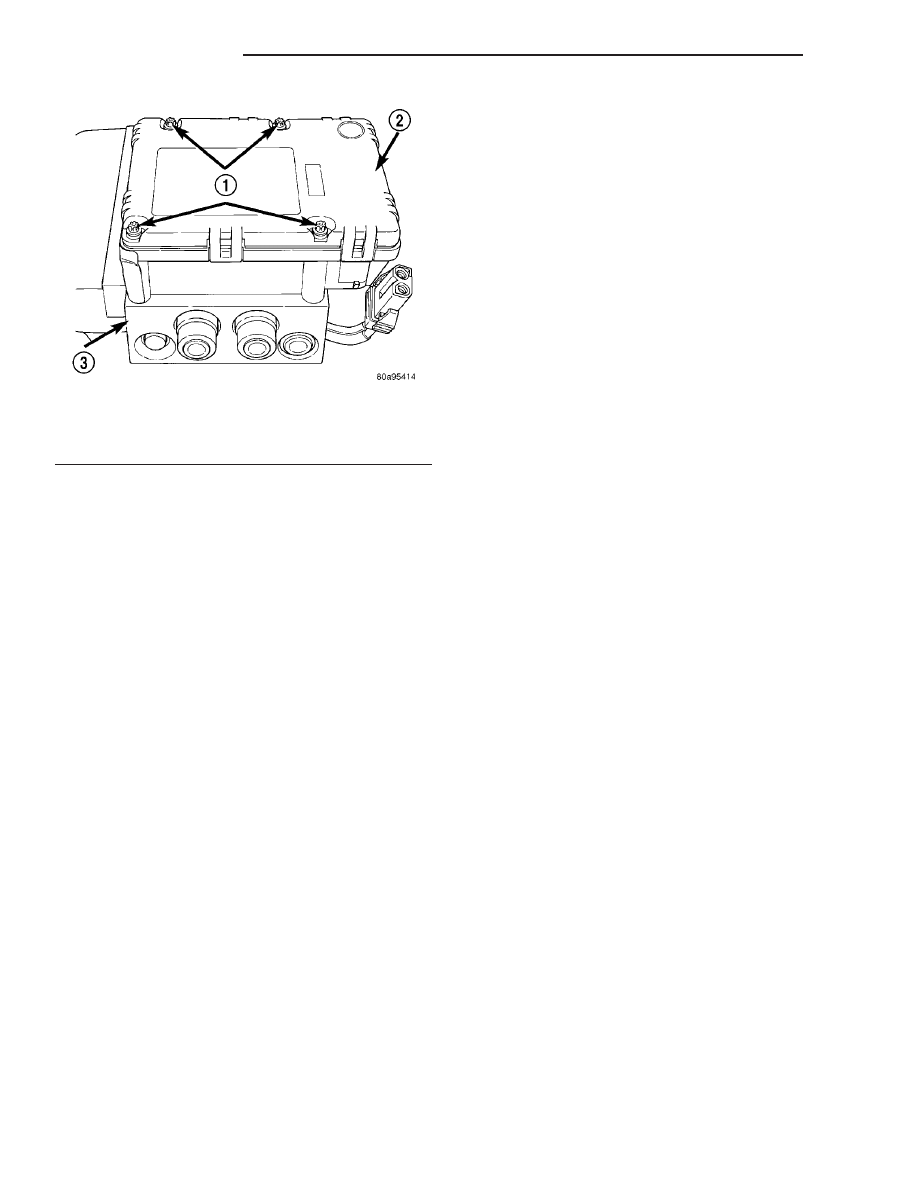Dodge Viper SRT-10 (ZB). Manual - part 45

NOTE: For assembly, (Refer to 5 - BRAKES - ABS/
HYDRAULIC/MECHANICAL/ICU (INTEGRATED CON-
TROL UNIT) - ASSEMBLY).
ASSEMBLY
(1) Install the CAB on the HCU lining up the sole-
noids with the valves.
(2) Install the 4 bolts mounting the CAB to the
HCU (Fig. 12). Tighten the CAB mounting bolts to a
torque of 2 N·m (17 in. lbs.).
(3) Plug the pump/motor wiring harness into the
CAB (Fig. 11).
(4) Install the ICU in the vehicle. (Refer to 5 -
BRAKES/HYDRAULIC/MECHANICAL/ICU
(INTE-
GRATED CONTROL UNIT) - INSTALLATION)
INSTALLATION
(1) Install ICU onto its mounting bracket.
(2) Install three bolts attaching ICU to mounting
bracket (Fig. 10). Tighten mounting bolts to 10 N·m
(85 in. lbs.) torque.
(3) Install primary and secondary brake tubes
from the master cylinder at ICU hydraulic control
unit (Fig. 9). Tighten primary and secondary brake
tube nuts to 17 N·m (145 in. lbs.) torque.
(4) Install three chassis brake tubes into their
respective outlet ports in ICU hydraulic control unit.
(Fig. 9). Tighten three brake tube nuts to 17 N·m
(145 in. lbs.) torque.
CAUTION: Before installing the 24-way connector in
the CAB, be sure the seal is properly installed in
the connector.
(5) Install 24-way connector into socket of CAB as
follows:
(a) Position 24-way connector in socket of CAB
and carefully push it down as far as possible.
(b) Once connector is fully seated into CAB
socket, push connector lock inward. This pulls con-
nector into socket of CAB and locks it in place.
(6) Install belly pan front extension. (Refer to 23 -
BODY/EXTERIOR/BELLY PAN - INSTALLATION)
(7) Install access panel in forward portion of left
front wheel well.
(8) Install tire and wheel assembly (Refer to 22 -
TIRES/WHEELS - INSTALLATION). Progressively
tighten the wheel mounting nuts in the proper
sequence to 122 N·m (90 ft. lbs.) torque.
(9) Lower vehicle.
(10) Connect battery negative (-) terminal to bat-
tery post.
NOTE: The ICU may need to be initialized using the
(11) Remove brake pedal prop.
(12) Connect DRBIII
t to data link connector below
steering column to initialize new CAB. Check for any
faults. Refer to Appropriate Diagnostic Information.
(13) Bleed base brakes and ABS, then repeat
bleeding base brake hydraulic system. (Refer to 5 -
BRAKES - ABS - STANDARD PROCEDURE)
(14) Fill master cylinder to proper fill level.
(15) Road test vehicle to ensure proper operation
of base and antilock brake systems.
Fig. 12 CAB Attaching Bolts (Typical)
1 - MOUNTING BOLTS
2 - CAB
3 - HCU VALVE BLOCK
5 - 58
BRAKES - ABS
ZB
ICU (INTEGRATED CONTROL UNIT) (Continued)